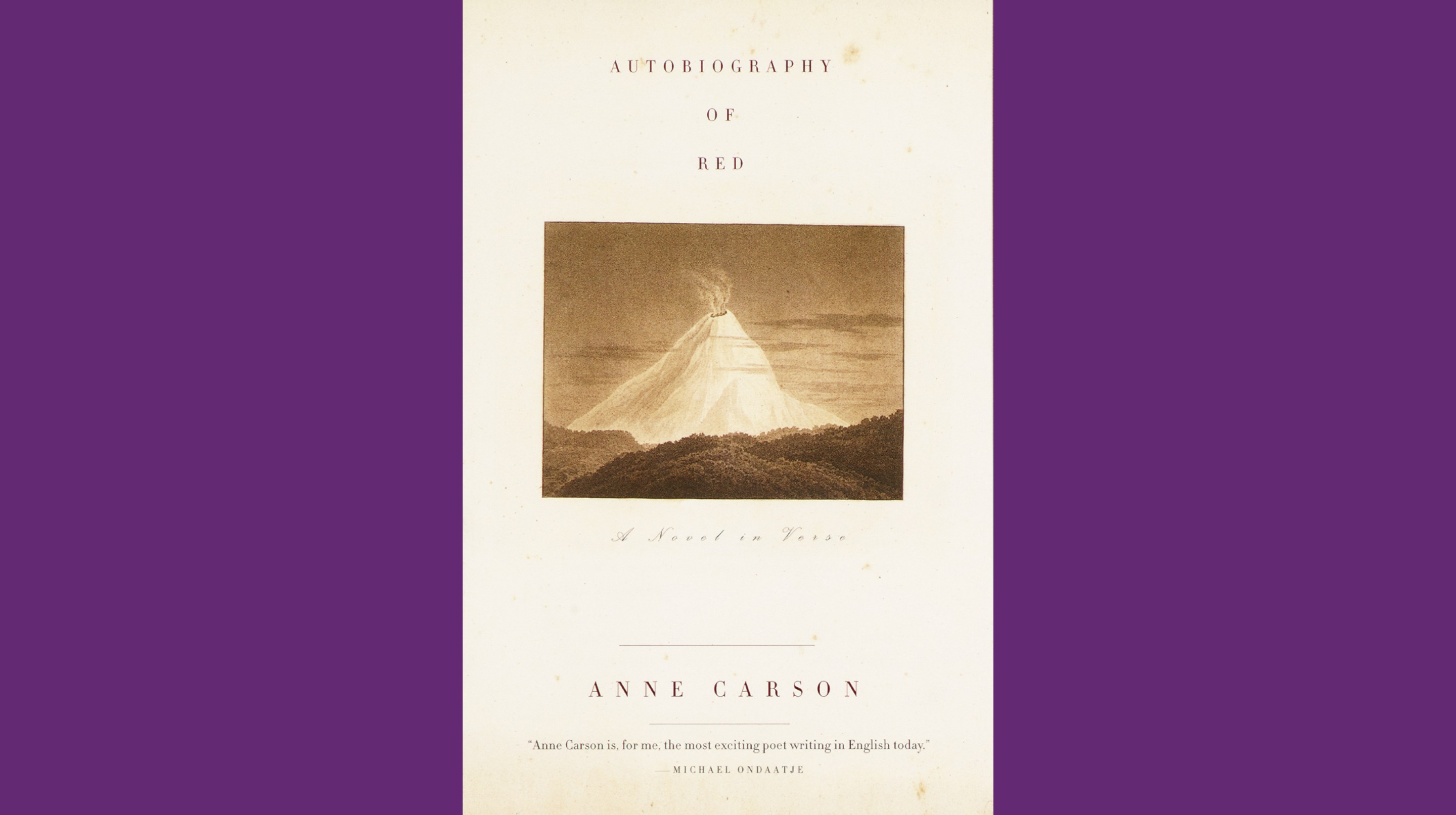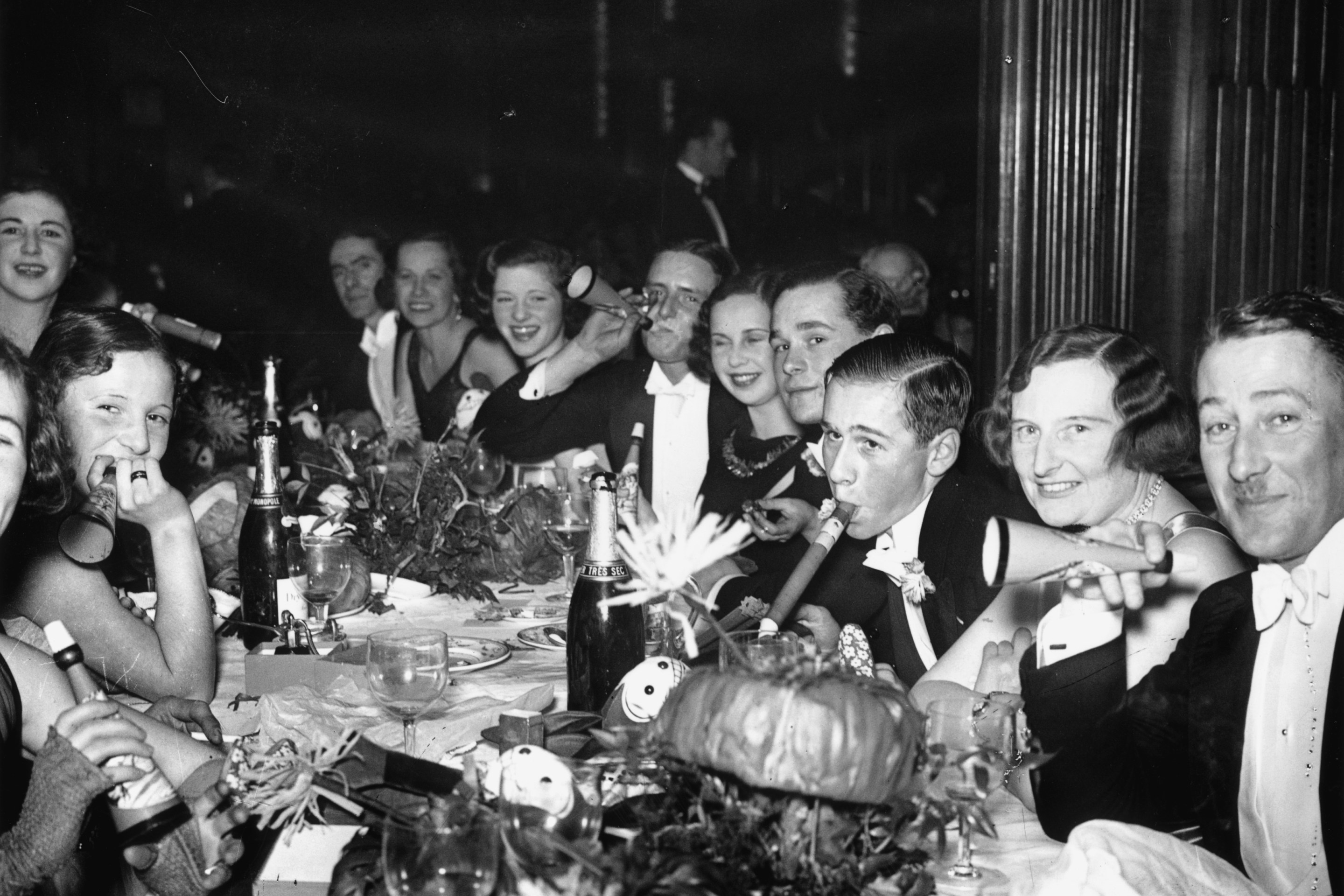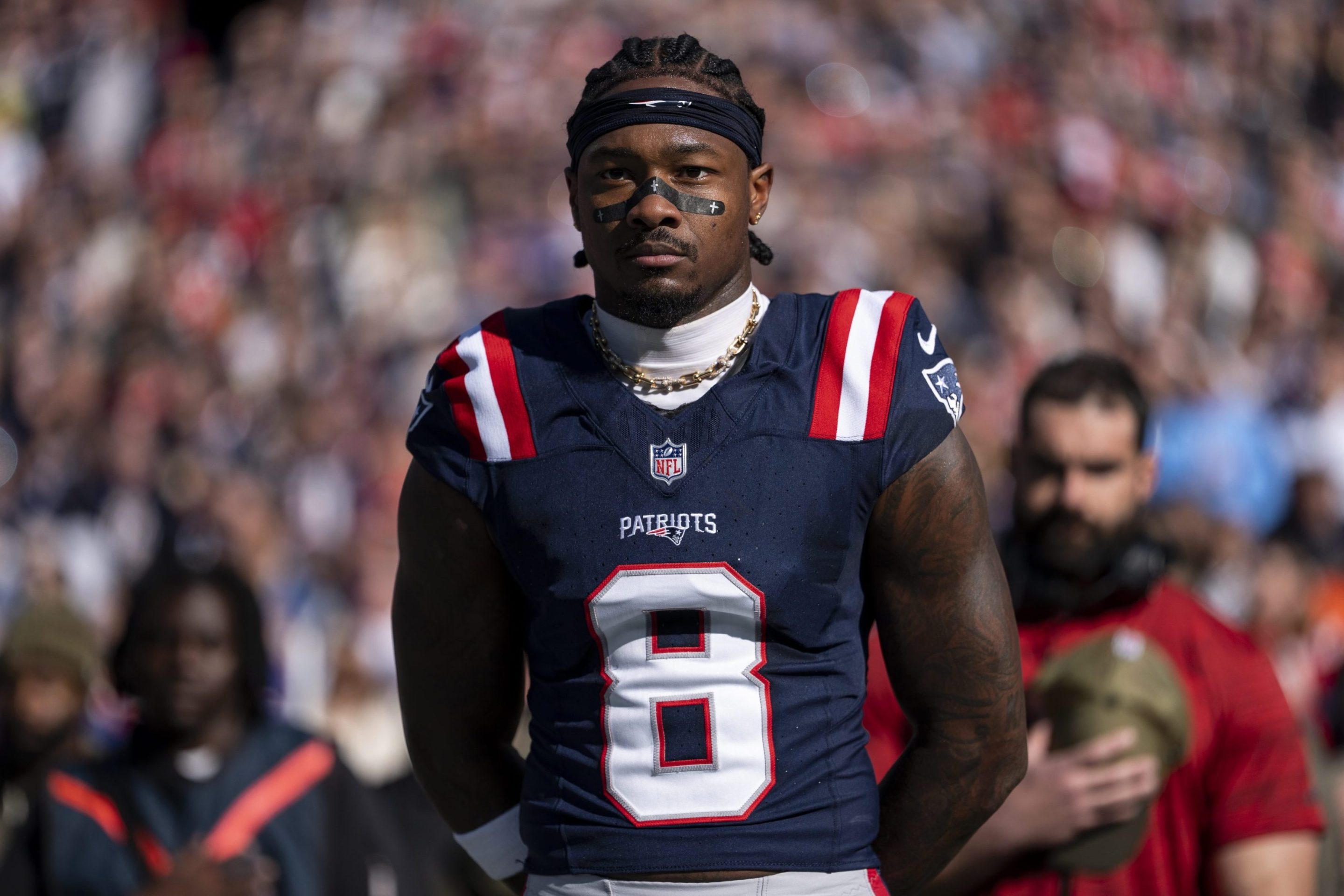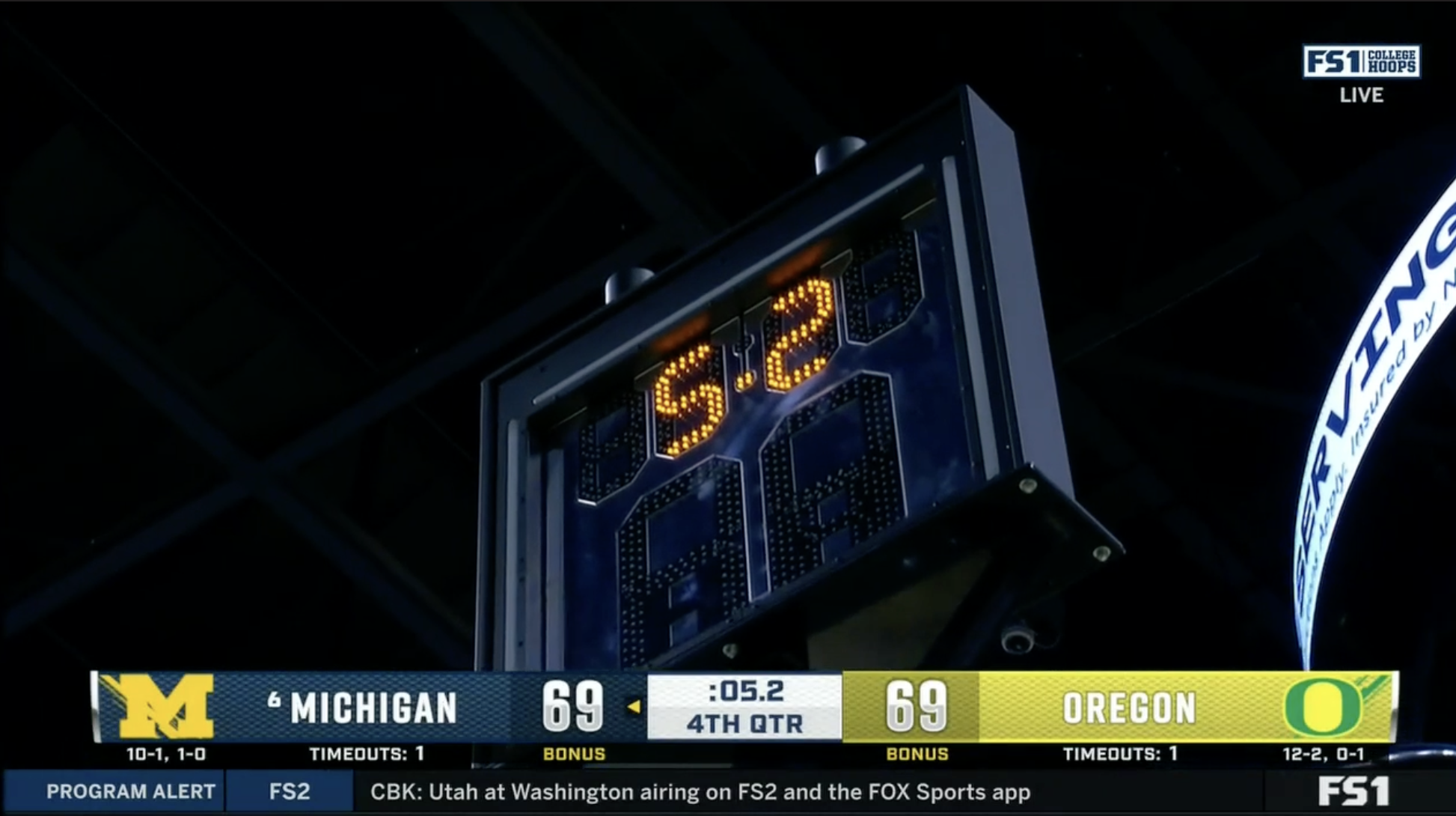Welcome back to Defector Reads A Book! Our December DRAB selection was Anne Carson's Autobiography of Red, which the Defector book sickos have read and discussed. We’ll be down in the comments to chat with you as soon as you’re done reading!
Giri Nathan: I haven’t thought this much about volcanoes in a very long time.
Maitreyi Anantharaman: I haven’t thought this much about anything in a very long time. I don’t think it will shock any of you to find out that I appreciated this book much more than I did as a 17-year-old.
Kelsey McKinney: I did not realize until a few pages into this book that I too read it as a youth. This was technically my second read but I absorbed so little of it the first time that it felt like the first. So much of the space and pauses require you to take your time, and I guess that is not really the pursuit of youth.
GN: We could start with those first few pages. I don’t think I’d realized until now, somehow, that Anne Carson was a classicist by profession. And that’s where her world of references comes from. And before the poem itself starts she’s producing these funny pseudo-academic documents, appendices about Stesichoros, the poet whose fragments she built the character of Geryon out of. I was thinking about what it would be like to be a colleague of hers, some tweedy and self-serious type, and then you have this joker who knows all the same esoterica as you but has this totally arch, loopy approach to the subject matter. It sounds like a trip. I love the “Clearing Up Of The Question Of Stesichoros’ Blinding By Helen,” especially. It doesn’t clear anything up and in fact does its best to confuse you.
MA: Yes, as a scholar she is really bonkers and excellent. Here I will quickly shout out Eros the Bittersweet, a book adapted from her dissertation about Greek desire that may be the most fascinating academic work I’ve ever read.
GN: So that’s a good opportunity to describe the basic project of the book. Carson is taking this pretty marginal figure from Greek mythology— Geryon, who was killed by Herakles for his red cattle—and flipping that into a coming-of-age story set in the (ambiguously) modern world, where Herakles “kills” Geryon by breaking his heart.
KM: To be honest, starting this book (even after reading it once and theoretically being older and wiser) made me feel extremely behind. My high school read two works of literature in AP English and my knowledge of almost all mythology is weak at best. I found myself inclined to do a lot of the same extra reading I did to fully grasp Beowulf last month, but pushed that desire down until after the first read. That meant that I definitely did not get as much out of all of her references and allusions as I maybe could have, but this is still a deeply moving and enjoyable read without that full repertoire of education that Carson clearly has! I found the “heartbreak “as a form of death decision in particular very moving, even without the full background.
MA: Oh, for sure, as with all postmodern-y stuff, nearly every allusion is lost on me, I suspect. And yeah, Kelsey, that conflation of desire and death I think is—sorry to bring up Eros the Bittersweet again—a real animating theme of her work. Here’s a quote from that: “In Greek, the act of love is a mingling and desire melts the limbs. Boundaries of body, categories of thought, are confounded. The god who melts limbs proceeds to break the lover as would a foe on the epic battlefield.”
GN: I’d like to appreciate for a second what a left-field and audacious idea it is to take this random guy who gets killed off and cast him as a moody, teenage artist-in-bloom who gets his heart broken, while preserving those basic facts of his character (red, winged, lived on an island). Such an odd character to get fixated on, and Carson makes his world so rich even though it really wasn’t in the original texts. She acknowledges that she’s working from mere fragments that Stesichoros wrote. I think that’s something that distinguishes this “translation”—using that word very loosely—from a lot of others, even the Beowulf, which dwell on the more obviously important characters and work within the parameters of that original text.
KM: Just to continue your point, Giri, one section that really blew me away was Appendix C, which you mentioned earlier because it doesn’t clear anything up. But in that section she uses a lingual format that I only recognize from a terrible logic class I had to take in college. Using this “If X then Y” format, Carson works us through a series of potentially true or false statements, most of which are dependent on the statement before it. This feels like a common trope in the way that academics critique writing (If the writer wrote this, then they meant this, which allows us to conclude…), but to your point, I think it starkly underlines Carson’s awareness that she knows this is all a reach from the original text. It is not trying to be a perfect translation or even extension of the formerly created universe! “12. If we look Stesichoros in the eye and ask him what he thinks of Helen either he will tell the truth or he will lie.” Of course, we can’t know. Of course, this is all made up.
MA: I wish I had taken a logic class in college. Maybe then I would be less illogical… But Giri, the work this reminded me the most of was John Gardner’s Grendel, which also kind of inhabits a marginal figure in an epic and does really neat things with him. And that’s what’s so exciting about this book to me—and maybe what Carson finds so interesting about Stesichoros. They’re both sloughing off convention and genre and the constraints of the Homeric epithet.
GN: I loved her clear admiration for Stesichoros in the very first pages of the book. She says he “unlatched” being, abandoned the epithets. Then she describes some of the very arresting and original ways he described stuff—a river being root silver, an insomniac being outside the joy, a killing being cream black—and I was thinking, OK, yeah, that’s also you Anne Carson, just hell-bent on originality on every line, wrong-footing you with every turn of her figurative language. The prevailing emotion I felt while reading this was surprise. She never gives you the metaphor that would be comfortable or familiar. I can see why she admired that in Stesichoros.
MA: Yeah, I think this is sort of Sapir-Whorf-ish, but that “unlatching” opens the reader up to all new kinds of emotional experiences. Language! The power she has!
KM:. This is in many ways a dense and erudite endeavor. Wow fancy myths, wow fancy allusions. But then you have these moments where Carson allows these characters to have a humor that as a reader felt like an oasis to me. In one section, talking about a butterfly he says “He’s fucking him. / Herakles! Said his grandmother. He closed his eyes. My heart aches when I am bad.” This made me laugh so hard!
GN: The book is really funny at parts. The funniest part to me was near the end when Geryon eats a one-two punch from Ancash and it’s like, “He’s ambidextrous! thought Geryon with admiration” in the middle of getting beat up. Some of the humor is trolly academic stuff, some of it is straight-up teenage soap-opera stuff, some of it is just a particularly weird turn Anne Carson decided to take in a description.
MA: On the subject of trolling! I wonder if there is some of that in the title, which seems a bit winking to me.
KM: It absolutely has to be some kind of trolling of literary types to name a book: “Autobiography of Red: A Novel in Verse.” Just fire up the auto-fiction drama oven and let’s get cooking. I don’t really know what to make of it. What would y’all call this... book?
GN: So at least within the universe of the book, there is an autobiography. Geryon (“Red”) started writing his own autobiography as a kid, predicting some very grim stuff that was going to happen to him later, which gets talked about with some concern at a parent-teacher conference (also very funny to me). And Geryon discovers photography and keeps adding to this autobiography, as this never-ending photo essay, over the course of his life. So I read Carson’s title as a reference to a book described within the text, which makes it even more of a fake-out.
MA: I think it helps to see it as the sort of unlatching and boundary-erasing she loves Stesichoros for, and with this book, it doesn’t really seem possible to divorce “content” and “form.” In my notes, I’ve written “Autobiography??? Myth??” and I don’t really remember what I meant by that, but I think I was taken with the way she’s centered her book on two vastly different types of stories, the autobiography, the most intimate and maybe narcissistic form, and the myth, the grandest and most humbling. Thematically, that was what I found affecting and personally moving about this as a coming-of-age story, which is inevitably going to be about finding a place in the world and discerning where you end and where the world begins.
KM: That’s what’s interesting to me, though. On its own “Autobiography of Red” makes sense as a title! Tacking on the “A novel in verse form,” lends itself to your point immensely Maitreyi! If we draw stark and bold lines between types of art forms, perhaps in our effort at categorization, we reduce something that could have been expansive into something that is easy to hold in our hands. That’s part of why I love that she includes “photography” as an exercise in this story without actually including any photographs. Instead of saying “look at this,” she shows us that photographs are a medium used by a character to get somewhere as an individual, to try and find some place where he belongs! (Realizing I am paraphrasing some art from another mythological tale: Disney’s Hercules.)
GN: I love that we get whole chapters devoted to photographs that Geryon took. And that he takes them sporadically over the course of the book, and the climax is a flurry of photographs he takes in Peru, including one he does (or doesn’t) take of himself flying over the volcano. They chart his artistic growth, from the spray-paint can to the camera. My favorite photograph was “If He Sleep He Shall Do Well,” which is a 15-minute exposure of a fly drowning in some water, taken while Geryon is in the depths of his heartbreak. Carson does such a good job of framing these shots that I am forced to assume she is a very good photographer, too.
MA: Herakles sees photography as “just a bunch of light hitting a plate” and Geryon considers it “a way of playing with perceptual relationships,” a phrase that really struck me. I wonder if he found some kind of comfort or order in it, given that he experiences the world as something of a synesthete, all his senses bleeding together, and that his actual relationships are kind of slippery.
GN: He is definitely a synesthete (and this was written in 1998 before everyone “was” a synesthete). I’m remembering the part where he does a science project on the noises colors make. And he describes to his classmates “the cries of the roses / being burned alive in the noonday sun,” “like horses in war.” And his classmates are like “uhhhh.” And then the science teacher tells him “You should be / interviewing roses not people,” and the last page of his project ends up being a photograph of his mother’s rosebush under the kitchen window, which brings him some closure. But yeah, at that point he was worried he was “mad,” and he’s revisiting this story as an adult because he’s thinking about the “blank desertion of his own mind.” He feels very lonely, taking in the world in this way no one else recognizes.
MA: For all the thrills of unlatching and erasing boundaries, there is also something very terrifying about how Geryon experiences the world! Beautiful, sure, but terrifying.
KM: Beautiful and terrifying… just like… volcanoes, am i right?
GN: That’s right. You hear it more and more. If you think about the structure of the book, it’s basically these two lovers taking two long road trips to see a volcano, driven by some maternal figure—Herakles’s grandmother, Ancash’s mother—and a bunch of other stuff happens in between. Volcanoes are everywhere. We hear about the huge volcano that blew up in Hades, which Herakles’s grandmother took a photo of from her roof. There was a prisoner who survived that explosion, who said he was changed by it and became known as “Lava Man,” and he would tour with a circus and show people the sizzling hot blood that came out when he pricked his skin. Later, Ancash, upon seeing Geryon’s wings, reveals to him in hushed tones that some villagers in Jucu speak of “The Ones Who Went And Saw And Came Back,” people who went inside a volcano and survived. They come back red and winged, and Ancash believes Geryon is one of those, which seems to allow Geryon to embrace himself.
KM: He also tells him that the red winged people who survived the volcanoes had “all of their weaknesses burned away,” which I found incredibly haunting. Here you have Herakles, who is travelling around the world to tape the sounds of volcanoes for a documentary on Emily Dickinson (which… what?), and you have this myth that the people who survive a volcano are now infinitely strong. I keep thinking about this line “Everyone seems to be waiting, said Geryon. Waiting for what ? said Ancash./ Yes waiting for what, said Geryon.” And how waiting is such a theme for Dickinson in her work, how we are always trying to absorb a pause in both her and Carson’s work as a kind of imminent threat. A volcano could always explode, right? But when? It doesn’t seem like it’s now. It’s easy to forget that the giant cone in the distance could destroy everything you’ve ever known. It feels like when Greyon flies into the volcano it’s because he’s done waiting. He wants tangible love and he wants it now, goddammit!
GN: I actually fell into the rabbit hole the other night of Emily Dickinson’s volcano poems. There are some. Geryon references one while they’re in Peru. Big repression/eruption themes. And at various points, Geryon starts to see his own emotions in geological terms: “It may happen / that the exit of the volcanic vent is blocked by a plug of rock, forcing / molten matter sideways along / literal fissures called fire lips by volcanologists. Yet Geryon did not want / to become one of those people / who think of nothing but their stores of pain.”
MA: Everything’s repression with Emily Dickinson, I suppose. (And the epigraph is a volcano poem, of hers, too.) Though I confess it was a different poet who moved me most here. Herakles’s grandmother, when they’re studying her volcano photograph, quotes Yeats: “Gaiety transfiguring all that dread.” Disasters can be kind of beautiful. Also Herakles’s grandmother owns. Can’t say the same for her grandson.
GN: Herakles is such a tool. He’s supposed to be charismatic? And possibly even a muse? But my mental image of him is just swaggering into a scene, eating something and shouting. Maybe the other people were in the middle of something, but now he’s the center of attention—then he leaves whenever he’s had enough. Kind of how it went for Geryon’s youth, sadly. But I really liked the love triangle road trip at the end, where his two younger lovers past and present are kind of rolling their eyes at Herakles, but both recognize there’s something irresistible about him, and that they are linked by him, competing for his affections. (Weirdly it reminded me of Y tu mamá también?)
MA: Ha, yes, I see that. One last thing. Anne Carson taught at Michigan for a few years in the 2000s, and I’d heard that she maybe still lived here in Ann Arbor. While looking into it, I stumbled across Sam Anderson’s 2013 New York Times Magazine profile of Carson and her husband Robert Currie, which contains what may be the most arresting image ever:
Anne Carson has sat courtside at a Pistons game!!!!
GN: This is how all literary exegesis should end: courtside at a Pistons game.
DRAB will be in the comments for the next couple days to hear your thoughts and chat with you. If you missed out on this month’s book, don’t worry! January is a new month and we’ll announce our next pick tomorrow.







